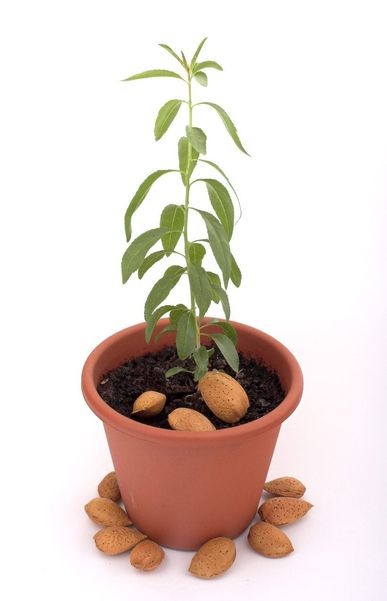About Planting Almond Nuts
A little nugget of information that you may not know; almonds, although referred to as nuts, are actually a type of stone fruit. Almond trees bloom in February or March, leaf out and produce a greenish fruit that looks quite a bit like a peach, only green. The fruit hardens and splits, revealing the almond shell in the core of the fruit hull. If you want to try almond germination from seed, steer clear of processed almonds. As a result of a couple of Salmonella outbreaks in the early 2000’s, the USDA began requiring all almonds to be sanitized via pasteurization as of 2007, even those labeled “raw.” Pasteurized nuts are duds. They won’t result in trees. You must use fresh, unpasteurized, unshelled, and unroasted nuts when growing almonds from seed. The only way to get such nuts is to get truly raw seeds from a farmer or overseas.
How to Grow an Almond from Seed
Fill a container with tap water and put at least a dozen almonds into it. Allow them to soak for at least eight hours and then drain them. Why so many nuts if you only want one tree? It is because of their uncertain germination rate and to account for any that may mold. Using a nutcracker, partially crack the almond shell to expose the interior nut. Don’t remove the shell. Arrange the nuts in a container lined with damp paper towel or sphagnum moss and cover the container with plastic wrap to retain moisture. Place the container of nuts into the refrigerator for two to three months, checking each week to be sure is still moist inside. This process is called stratification. Stratification just means you are tricking the almond seeds into believing they have gone through winter. It boosts the germination rate of seeds which usually germinate within a few days of planting. Seeds can also be “field stratified” by soaking them overnight and then planting outside in the fall. The seeds will not grow until spring, but the stratification process will increase their rate of germination. Once the seeds have been stratified, fill a container with potting soil. Press each seed down into the soil and inch (2.5 cm.) or so. Water the seeds and place the container in a warm, sunny area. Water once a week or when the soil feels dry 1 ½ inches (4 cm.) down into the soil. Transplant the plants when they are 18 inches (46 cm.) in height.
